-

Original Fabric Inspired by 1907
In 1907, a remarkable fabric sample book was created in France —a treasury fi...
-

Indigo Hunter Camo Hooded Jacket
The highly acclaimed Indigo Hunter Camo Hooded Jacket from PREQUEL makes its ...
-

Striped Shirt
This item is currently in the sewing stage and will be released soon.
Feat...
-

French Military Hospital Pajamas (1940s–1950s)
This pajama set, shown in the photograph, was used in French military hospita...
-

WOOL 100% FALL/WINTER 2026 COLLECTION
The journey for Autumn/Winter 2026 begins.We’ve started discussions with weav...
-

ORIGINAL STRIPE FABRIC SAMPLE
In ProductionWe are currently creating a three-piece suit using a classical o...
-

BRIDLE LEATHER
Bridle leather was born in rainy England, originally crafted for horse tack.B...
-

ORIGINAL FABRIC
Our fabric development for Fall/Winter 2026 has already begun.Inspired by woo...
-

Original Metal Buttons
This metal button is a modern reproduction inspired by buttons actually made ...
-
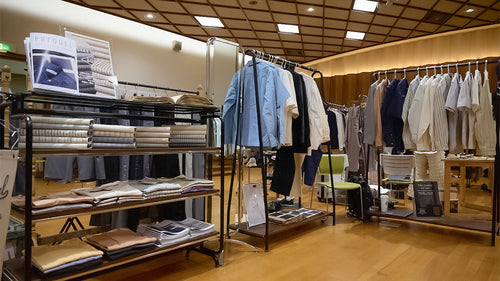
Osaka Joint Exhibition
We participated in the joint exhibition “is am are” held in Osaka.
We are tru...
-

J1001 Single Breasted Car Coat
The single-breasted car coat from the 1920s has been reimagined with a modern...
-

FROM 100 YEARS AGO
A new garment born from a 100-year-old fabric sample book
At Prquel, we are i...
-

Musée de l'Impression sur étoffes
The Mulhouse Museum of Textile Printing is located in Mulhouse in eastern Fra...
-

OPENING EVENT OF BENNY'S STORE
We participated in the grand opening event of Benney's Store, which carries P...
-

Vintage Baseball Shirts
One vintage baseball shirt I recently acquired.It is a pullover type shirt wi...
-

ORIGINAL METAL BUTTONS
The original metal buttons are now ready to be worn with the air of the 1920s...
-

ORIGINAL THIN PAPER
Some time ago, I made a sample of the original thin paper for the prequel and...
-

VINTAGE SWEATSHIRTS
The sweatshirts produced by PREQUEL are a tribute to the American vintage of ...
-

SACK COAT
This is a sack coat tailored in France during the 1920s and 1930s. The small ...
-

Print Strike-Off
This is a “print strike-off” made to check the print finish before production...
-

SAMPLE IMAGE
This photo is a simulated sample image.We plan to produce a square type buckl...
-
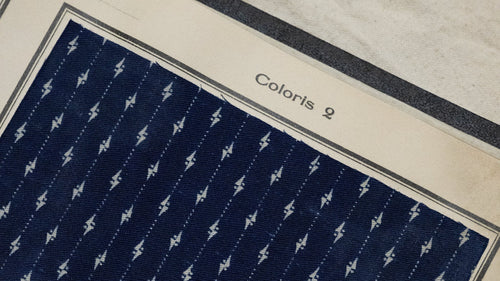
PRINTED FABRICS
I used to get a sample book of printed fabrics from the 1920s and 1930s in Fr...
-
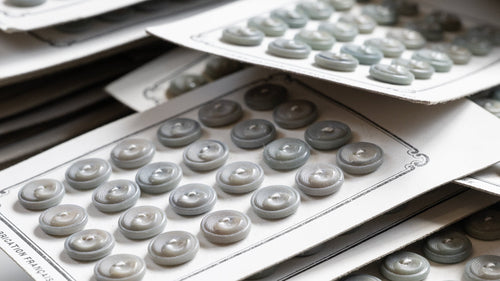
FABRICATION FRANÇAISE
A nut button made a few decades ago, purchased in France some time ago.The wo...
-

Key Chain
The photo shows a brass motel key chain that we plan to deliver to our dealer...
-

Cotton Felt Pennant
This picture shows the cotton felt pennant of the Prequel that we plan to giv...
-

100 Years Old Fabric
This material is a valuable fabric taken from a fabric sample book approximat...
-

Original Fabric
PREQUEL - a new chapter of style that transcends time.PREQUEL is an apparel b...
-

Jacquard Fabrics
One of the most appealing aspects of the Prequel is its original Jacquard fab...
-

J0001 Combat Hooded Jacket
This piece was created with a modern interpretation of the reversible camoufl...
-

1920s French Military Pants
Military pants found at a flea market in Paris that speak of history
We stumb...
-
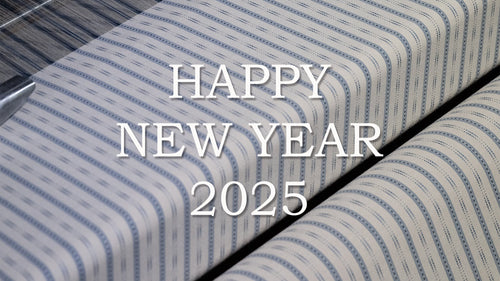
HAPPY NEW YEAR 2025
We will continue to strive to bring you better products in 2025 while gradual...
-

Indigo Dot Dobby Fabric
This indigo dot dobby fabric was inspired by a fabric from 100 years ago. The...
-

Vintage Trousers
Charming French pants found in ItalyI fell in love at first sight with these...
-

Ribbed Sweatshirt
This sweatshirt is made of a reversible ribbed fabric carefully knitted using...
-
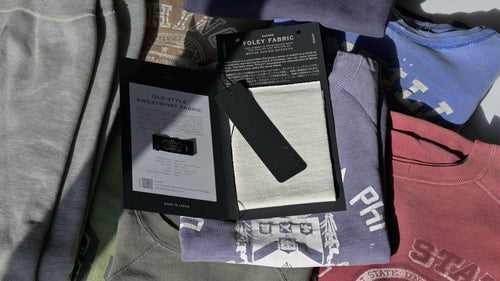
Vintage Sweatshirt Fabric
The Charm of 1950s to 1960s American Sweatshirt Vintage ClothingVintage Ameri...
-

Prequel Sweatshirt Wear Changes
Feel the passage of time by wearing a PURIQUEL sweatshirt.The recently arrive...
-

Indigo Camouflage
This fabric is an indigo camouflage created by combining traditional camoufla...
-

1930s summer pants fabric
We will discuss the development of an item based on summer pants from the 193...
-

Buttons from 100 years ago
【A 100-year-old button revived in the modern age: a small challenge to reprin...
-

1920s vintage henley shirt
Underwear shirt from the 1920s, woven of wool. At that time, synthetic fibers...
-

C1001 Henley Sweatshirt
We have been developing fabrics and making samples of "PREQUEL" products sinc...
-

European vintage clothing stores
I recently had the wonderful experience of visiting a French vintage clothing...
-

100 year old fabric sample book
We have created our own fabrics based on a 100 year old French fabric sample ...
-

Classic Striped Fabric
The brand will make its debut in the fall of 2024.Overseas exhibitions and bu...
-

INDIGO DUCK HUNTER CAMO
This fabric is indigo camouflage, created based on a reversible camouflage pa...
-

1930's Officer Summer Pants
The officer summer pants, circa 1930, purchased from a Parisian thrift store,...
-

PREQUEL
The brand name "PREQUEL" represents the story before that story begins, as in...







































































































